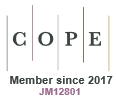Actinomycetes from diverse Malaysian habitats and ecosystems
Nurul ‘Izzah Mohd Sarmin A B * , Geok Yuan Annie Tan C * and Noraziah Mohamad Zin DA
B
C
D

Dr Nurul ‘Izzah Mohd Sarmin is a Senior Lecturer at Universiti Teknologi MARA (UiTM). She has successfully isolated a novel endophytic actinomycete, Streptomyces kebangsaanensis, from a Malaysian ethnomedicinal plant. Her research studies include anti-biofilm activity of endophytic actinomycetes and medicinal plants against multi-species oral biofilms, particularly on the role of quorum-sensing systems in regulating microbial resistance mechanisms, to reduce antimicrobial resistance. She is currently working on isolating anti-biofilm compounds from Dipterocarpaceous plants and peptides from endophytic bacteria. |

Dr Geok Yuan Annie Tan is a Professor in Microbiology & Molecular Genetics at the Institute of Biological Sciences, Faculty of Science, Universiti Malaya. She has been working with actinomycetes since 1998, particularly in the aspects of diversity and taxonomy. She has expanded her research interests to include natural product discovery, bacterial diversity and microbiome studies. Professor Tan is a Life Member and the current Assistant Secretary of the Malaysian Society for Microbiology. |

Dr Noraziah Mohamad Zin is a Professor in Medical Microbiology at Universiti Kebangsaan Malaysia. Her research interests include pathogenic bacteria, bacterial metabolites and their applications in addressing antimicrobial resistance. Professor Nora is a Life Member of the Malaysian Society for Microbiology. |
Abstract
Malaysia, one of the world’s most biodiverse countries, supports diverse ecosystems that harbour rich microbial communities, including actinomycetes. These Gram-positive, high-GC-content bacteria occur in terrestrial soil, marine sediments and plant tissues, where they contribute to nutrient cycling, plant growth promotion, pathogen suppression and the production of bioactive metabolites. This review covers studies from 2010 to 2024 on the diversity of actinomycetes isolated from Malaysian ecosystems. Several novel actinomycete species were reported from Malaysian environments, predominantly mangrove soils in Peninsular Malaysia, with fewer studies in East Malaysia (Sabah and Sarawak). While Malaysian mangroves and marine sediments have been frequently sampled, rainforest ecosystems remain underexplored despite their exceptional plant diversity. Malaysian actinomycetes exhibit promising pharmaceutical and agricultural applications, including antimicrobial, antioxidant, anticancer and insecticidal activities, as well as plant growth-promoting traits. However, few studies have incorporated genome-based approaches or systematic screening of biosynthetic gene clusters. Expanding biogeographic surveys and integrating high-throughput genomic and metabolomic methods are essential to unlock the full biotechnological potential of Malaysia’s actinomycetes.
Keywords: actinobacteria, microbial diversity, plant-associated bacteria, secondary metabolites, Streptomyces.
Introduction
Malaysia, recognised as a global biodiversity hotspot, hosts a wide range of ecosystems, including tropical rainforests, mangroves and peat swamps. These diverse ecological habitats support a wide range of microorganisms, among which actinomycetes represent an important group of soil-dwelling bacteria. Soil microbial communities often share many of the same microorganisms as those found in the rhizospheric microbial populations. Recent high-throughput studies have shown that over 80% of bacterial taxa in tropical plants are shared across roots, stems, leaves and soils, with stochastic processes playing a major role in community assembly.1
Members of the phylum Actinomycetota (commonly referred to as actinomycetes) are Gram-stain positive bacteria with high-GC-content.2 They are predominantly soil inhabitants, although some species also reside as endophytes within plant tissues without causing harm to the hosts. They often enhance host fitness through nutrient mobilisation, pathogen suppression and the production of bioactive compounds.3 The genus Streptomyces, for example, dominates many soil communities and contributes over two-thirds of known antibiotics.4
Ecosystem-specific diversity
Malaysian mangroves and marine sediments are among the most frequently sampled ecosystems for actinomycetes due to their unique environmental conditions.5–10 Mangroves are located at the land–sea interface, exposed to fluctuating salinity, temperature, pH and oxygen levels. Actinomycetes in these mangrove habitats adapt with special metabolic pathways and may produce natural products not found in terrestrial or marine-only environments. Conversely, information on the actinomycete diversity in Malaysian rainforest ecosystems remains low compared to their plant diversity. This knowledge gap constrains our understanding of actinomycete–plant interactions in tropical forests and their capacity to produce novel compounds.
Novel species discovery
Since 2013, a number of studies have documented the isolation of novel actinomycetes from Malaysian plants and soils (Table 1), mainly focusing on their taxonomy and antimicrobial properties, reflecting an increased interest in Malaysian actinomycetes diversity. Interestingly, only one novel species of endophytic streptomycete was described, Streptomyces kebangsaanensis, which was isolated from the internal tissues of Portulaca oleracea L., an ethnomedicinal plant.11 The strain has greenish-grey aerial mycelia (Fig. 1) with spiny spores (Fig. 2).
| Species name | Isolated from | Year | Reference | |
|---|---|---|---|---|
| Streptomyces kebangsaanensis | Internal tissue of an ethnomedicinal plant | 2013 | 11 | |
| Microbacterium mangrovi | Mangrove soil | 2014 | 12 | |
| Mumia flava | Mangrove soil | 2014 | 13 | |
| Streptomyces pluripotens | Mangrove soil | 2014 | 14 | |
| ‘Streptomyces humi’ | Mangrove soil | 2016 | 15 | |
| Monashia flava | Mangrove soil | 2015 | 16 | |
| ‘Streptomyces malaysiense’ | Mangrove soil | 2016 | 17 | |
| ‘Streptomyces colonosanans’ | Mangrove soil | 2017 | 18 | |
| ‘Streptomyces monashensis’ | Mangrove soil | 2019 | 19 | |
| Marinitenerispora sediminis | Marine sediment | 2019 | 20 | |
| Streptomyces solincola | Rhizospheric soil | 2022 | 21 | |
| Sciscionella sediminilitoris | Marine sediment | 2024 | 22 |
Species names in quotation marks are not validly published under the International Code of Nomenclature of Prokaryotes.
Geographic distribution and sampling patterns
These data from 2010 to 2024 (Table 1) also highlight the uneven geographical distribution of sampling sites across Malaysia, with most studies concentrated in the mangrove areas of Pahang in Peninsula Malaysia. Lee et al.5 isolated 87 strains from Pahang’s mangroves sediments where the actinomycetes isolated in the study exhibited high level of diversity and the isolates were assigned as genus Streptomyces, Mycobacterium, Leifsonia, Microbacterium, Sinomonas, Nocardia, Terrabacter, Streptacidiphilus, Micromonospora, Gordonia and Nocardioides from mangrove in the east coast of Malaysia. However, the northeastern regions such as Kelantan and Terengganu, and the northwestern part such as Perlis, remain largely unstudied.
Nevertheless, there are a few studies on actinomycete diversity in East Malaysia.23–25 Basik et al.23 isolated 578 actinomycete strains from wetlands and hill paddy fields in Sarawak on the island of Borneo, classifying them into 159 taxonomic units across 24 genera and 10 families, including 4 novel species and 61 putative novel species. Notably, Micromonospora was the dominant genus comprising 44% of isolates, indicating that Malaysian agricultural environments harbour rich actinomycete diversity beyond streptomycetes. Similarly, a total of 1049 actinomycete isolates were successfully isolated from various forest types in Sabah, also on the island of Borneo. The isolates were categorised into five genera, with Streptomyces being the most dominant; other identified genera were Micromonospora, Nocardia, Saccharopolyspora and Actinoplanes.25
Japanese researchers have also explored Malaysian forests in search of novel actinomycetes and bioactive compounds.26 Based on the ecological specificity of actinomycetes, under-explored areas could yield unique genera and species with novel metabolic profiles. As such, expanding the biogeographic scope of actinomycete surveys in Malaysia is necessary to achieve a comprehensive overview of actinomycete diversity and function.
Biotechnological potential
The actinomycetes diversity from Malaysia have shown promising bioprospecting potential in both pharmaceutical and agricultural applications. Several actinomycetes produce compounds with antibacterial, antioxidant or anticancer activities, including diketopiperazines, alkaloids and polyketides.11,27–29 In addition, a streptomycete strain isolated from a Malaysian forest soil sample, showed insecticidal activity against the Aedes mosquitoes.30 Other strains are known to promote plant growth through phosphate solubilisation, nitrogen fixation, or siderophore production, suggesting their potential application as biofertilisers or biocontrol agents.31
Bioinformatic analysis of the whole genome sequence of S. kebangsaanensis identified 24 biosynthetic gene clusters including those for polyketides, non-ribosomal peptides, terpenes, bacteriocins, siderophores and phenazines;32 the strain SUK12T produces phenazine-1-carboxylic acid (tubermycin B), an antibacterial compound.11 Biosynthetic gene clusters that are important in producing different types of antibiotics such as polyketide synthase (PKS) Type II, PKS Type III and non-ribosomal peptide synthetases (NRPS) biosynthetic genes were also discovered.32
Bioassay-guided screening of Malaysian actinomycetes has revealed compounds active against human pathogens like oral bacteria.27 Recent discoveries include novel metabolites from Streptomyces malaysiense (strain MUSC 136T), isolated from Malaysian mangrove soil, which produces novel antioxidative compounds shown to scavenge free radicals and exhibits pronounced cytotoxicity against HCT-116 colon cancer cells via modulation of p53 and glutathione levels.17
Despite these findings, few studies have characterised the biosynthetic gene clusters or metabolites resulting from bioassay-guided screening of the actinomycete strains.33 Comprehensive studies combining high-throughput screening and genomic analyses are needed to strengthen the biotechnological value of Malaysian actinomycetes.
Acknowledgements
The authors acknowledge institutional support provided by Universiti Teknologi MARA, Universiti Malaya and Universiti Kebangsaan Malaysia.
References
1 Haruna E, Zin NM, Kerfahi D, Adams JM. Extensive overlap of tropical rainforest bacterial endophytes between soil, plant parts, and plant species. Microb Ecol 2018; 75(1): 88-103.
| Crossref | Google Scholar | PubMed |
2 Oren A, Garrity GM. Valid publication of the names of forty-two phyla of prokaryotes. Int J Syst Evol Microbiol 2021; 71(10): 5056.
| Crossref | Google Scholar |
4 Donald L, Pipite A, Subramani R, Owen J, Keyzers RA, Taufa T. Streptomyces: still the biggest producer of new natural secondary metabolites, a current perspective. Microbiol Res 2022; 13(3): 418-465.
| Google Scholar |
5 Lee LH, Zainal N, Azman AS, Eng SK, Goh BH, Yin WF, Ab Mutalib NS, Chan KG. Diversity and antimicrobial activities of actinobacteria isolated from tropical mangrove sediments in Malaysia. Sci World J 2014; 1: 698178.
| Crossref | Google Scholar | PubMed |
6 Abidin ZAZ, Chowdhury AJK, Malek NA, Zainuddin Z. Diversity, antimicrobial capabilities, and biosynthetic potential of mangrove actinomycetes from coastal waters in Pahang, Malaysia. J Coast Res 2018; 82: 174-179.
| Crossref | Google Scholar |
7 Abdul Malek N, Zainuddin Z, Chowdhury AJK, Abidin ZAZ. Diversity and antimicrobial activity of mangrove soil actinomycetes isolated from Tanjung Lumpur, Kuantan. J Teknologi 2015; 77(25): 37-43.
| Crossref | Google Scholar |
8 Abidin ZAZ, Ahmad A, Usup G, Chowdhury AJK. Marine actinomycetes from Malaysia marine environments with antagonistic potential. Desalin Water Treat 2021; 219: 51-59.
| Crossref | Google Scholar |
9 Ng ZY, Tan GYA. Selective isolation and characterisation of novel members of the family Nocardiopsaceae and other actinobacteria from a marine sediment of Tioman Island. Antonie van Leeuwenhoek 2018; 111(5): 727-742.
| Crossref | Google Scholar | PubMed |
10 Law JW-F, Chan K-G, He Y-W, Mehmood Khan T, Ab Mutalib N-S, Goh B-H, Lee L-H. Diversity of Streptomyces spp. from mangrove forest of Sarawak (Malaysia) and screening of their antioxidant and cytotoxic activities. Sci Rep 2019; 9(1): 15262.
| Crossref | Google Scholar |
11 Sarmin NIM, Tan G, Franco C, Edrada-Ebel R, Latip J, Zin NM. Streptomyces kebangsaanensis sp. nov., an endophytic actinomycete isolated from an ethnomedicinal plant, which produces phenazine-1-carboxylic acid. Int J Syst Evol Microbiol 2013; 63: 3733-3738.
| Crossref | Google Scholar | PubMed |
12 Lee LH, Azman AS, Zainal N, Eng SK, Mutalib NA, Yin WF, Chan KG. Microbacterium mangrovi sp. nov., an amylolytic actinobacterium isolated from mangrove forest soil. Int J Syst Evol Microbiol 2014; 64: 3513-3519.
| Crossref | Google Scholar | PubMed |
13 Lee LH, Zainal N, Azman AS, Mutalib NA, Hong K, Chan KG. Mumia flava gen. nov., sp. nov., an actinobacterium of the family Nocardioidaceae. Int J Syst Evol Microbiol 2014; 64: 1461-1467.
| Crossref | Google Scholar | PubMed |
14 Lee L-H, Zainal N, Azman A-S, Eng S-K, Ab Mutalib N-S, Yin W-F, Chan K-G. Streptomyces pluripotens sp. nov., a bacteriocin-producing streptomycete that inhibits meticillin-resistant Staphylococcus aureus. Int J Syst Evol Microbiol 2014; 64: 3297-3306.
| Crossref | Google Scholar | PubMed |
15 Lee L-H, Azman A-S, Zainal N, Yin W-F, Ab Mutalib N-S, Chan K-G. Sinomonas humi sp. nov., an amylolytic actinobacterium isolated from mangrove forest soil. Int J Syst Evol Microbiol 2016; 65: 996-1002.
| Crossref | Google Scholar |
16 Azman A-S, Zainal N, Mutalib N-A, Yin W-F, Chan K-G, Lee L-H. Monashia flava gen. nov., sp. nov., an actinobacterium of the family Intrasporangiaceae. Int J Syst Evol Microbiol 2016; 66: 554-561.
| Crossref | Google Scholar | PubMed |
17 Ser H-L, Palanisamy UD, Yin W-F, Chan K-G, Goh B-H, Lee L-H. Streptomyces malaysiense sp. nov.: a novel Malaysian mangrove soil actinobacterium with antioxidative activity and cytotoxic potential against human cancer cell lines. Sci Rep 2016; 6: 24247.
| Crossref | Google Scholar | PubMed |
18 Law JW-F, Ser H-L, Duangjai A, Saokaew S, Bukhari SI, Khan TM, Ab Mutalib N-S, Chan K-G, Goh B-H, Lee L-H. Streptomyces colonosanans sp. nov., a novel actinobacterium isolated from Malaysia mangrove soil exhibiting antioxidative activity and cytotoxic potential against human colon cancer cell lines. Front Microbiol 2017; 8: 877.
| Crossref | Google Scholar | PubMed |
19 Law JW-F, Ser H-L, Ab Mutalib N-S, Saokaew S, Duangjai A, Khan T-M, Chan K-G, Goh B-H, Lee L-H. Streptomyces monashensis sp. nov., a novel mangrove soil actinobacterium from East Malaysia with antioxidative potential. Sci Rep 2019; 9: 3056.
| Crossref | Google Scholar | PubMed |
20 Ng Z-Y, Fang B-Z, Li W-J, Tan G. Marinitenerispora sediminis gen. nov., sp. nov., a member of the family Nocardiopsaceae isolated from marine sediment. Int J Syst Evol Microbiol 2019; 69: 3031-3040.
| Crossref | Google Scholar | PubMed |
21 Lee ZY, Ng ZY, Mohd Nor MN, Teo W, Tan G. Streptomyces solincola sp. nov., isolated from soil in Malaysia. Int J Syst Evol Microbiol 2022; 72: 5594.
| Crossref | Google Scholar | PubMed |
22 Teo WFA, Devaraj K, Nor M, Li W-J, Tan G. Sciscionella sediminilitoris sp. nov., a marine actinomycete isolated from Cape Rochado, Malaysia, and the emendations to the description of the genus Sciscionella. Curr Microbiol 2024; 81: 124.
| Crossref | Google Scholar | PubMed |
23 Basik AA, Juboi H, Shamsul SSG, Sanglier J-J, Yeo TC. Actinomycetes isolated from wetland and hill paddy during the warm and cool seasons in Sarawak, East Malaysia. J Microbiol Biotechnol Food Sci 2020; 49: 774-780.
| Crossref | Google Scholar |
24 Juboi H, Hwang SS, Yeo TC, Nissom PM. Antimicrobial activities of Plantactinospora sp. KBS50, a rare marine-derived actinomycete from the coastal area of Sarawak. Malays J Microbiol 2019; 15: 111-119.
| Crossref | Google Scholar |
25 Mahmud F, Maili S, Aziz DN, Marajin L, Jembun M, How SE, Gansau JA, Sidek HM, Embi N, Lee PC. The isolation rate of culturable actinomycetes from Malaysian Borneo forests and their activity against mammalian GSK-3β. Curr Appl Sci Technol 2022; 22(4): 1-14.
| Crossref | Google Scholar |
26 Muramatsu H, Murakami R, Ibrahim ZH, Murakami K, Shahab N, Nagai K. Phylogenetic diversity of acidophilic actinomycetes from Malaysia. J Antibiot 2011; 64(9): 621-624.
| Crossref | Google Scholar | PubMed |
27 Azmin NRAM, Sarmin NIM, Khan HBSG, Zainal M. Identification of endophytic actinomycetes isolated from Hopea ferrea and its antibacterial activity against cariogenic bacterium. Malays Appl Biol 2024; 53: 37-46.
| Crossref | Google Scholar |
28 Ramasamy K, Lim SM, Abu Bakar H, Ismail N, Ismail MS, Ali MF, Weber JF, Cole AL. Antimicrobial and cytotoxic activities of Malaysian endophytes. Phytother Res 2010; 24(5): 640-643.
| Crossref | Google Scholar | PubMed |
29 Azman A-S, Othman I, Fang C-M, Chan K-G, Goh B-H, Lee L-H. Antibacterial, anticancer and neuroprotective activities of rare actinobacteria from mangrove forest soils. Indian J Microbiol 2017; 57: 177-187.
| Crossref | Google Scholar | PubMed |
30 Amelia-Yap ZH, Low VL, Saeung A, Ng FL, Chen CD, Hassandarvish P, Tan G, AbuBakar S, Azman AS. Insecticidal activities of Streptomyces sp. KSF103 ethyl acetate extract against medically important mosquitoes and non-target organisms. Sci Rep 2023; 13(1): 4.
| Crossref | Google Scholar | PubMed |
31 Chaiya L, Kumla J, Suwannarach N, Kiatsiriroat T, Lumyong S. Isolation, Characterization, and Efficacy of Actinobacteria Associated with Arbuscular Mycorrhizal Spores in Promoting Plant Growth of Chili (Capsicum flutescens L.). Microorganisms 2021; 9(6): 1274-1287.
| Crossref | Google Scholar | PubMed |
32 Remali J, Sarmin N’M, Ng CL, Tiong JJL, Aizat WM, Keong LK, Zin NM. Genomic characterization of a new endophytic Streptomyces kebangsaanensis identifies biosynthetic pathway gene clusters for novel phenazine antibiotic production. PeerJ 2017; 29(5): e3738.
| Crossref | Google Scholar | PubMed |
33 Ahmad SJ, Zin NM, Mazlan NW, Baharum SN, Baba MS, Lau YL. Metabolite profiling of endophytic Streptomyces spp. and its antiplasmodial potential. PeerJ 2021; 9: e10816.
| Crossref | Google Scholar |
 Dr Nurul ‘Izzah Mohd Sarmin is a Senior Lecturer at Universiti Teknologi MARA (UiTM). She has successfully isolated a novel endophytic actinomycete, Streptomyces kebangsaanensis, from a Malaysian ethnomedicinal plant. Her research studies include anti-biofilm activity of endophytic actinomycetes and medicinal plants against multi-species oral biofilms, particularly on the role of quorum-sensing systems in regulating microbial resistance mechanisms, to reduce antimicrobial resistance. She is currently working on isolating anti-biofilm compounds from Dipterocarpaceous plants and peptides from endophytic bacteria. |
 Dr Geok Yuan Annie Tan is a Professor in Microbiology & Molecular Genetics at the Institute of Biological Sciences, Faculty of Science, Universiti Malaya. She has been working with actinomycetes since 1998, particularly in the aspects of diversity and taxonomy. She has expanded her research interests to include natural product discovery, bacterial diversity and microbiome studies. Professor Tan is a Life Member and the current Assistant Secretary of the Malaysian Society for Microbiology. |
 Dr Noraziah Mohamad Zin is a Professor in Medical Microbiology at Universiti Kebangsaan Malaysia. Her research interests include pathogenic bacteria, bacterial metabolites and their applications in addressing antimicrobial resistance. Professor Nora is a Life Member of the Malaysian Society for Microbiology. |




